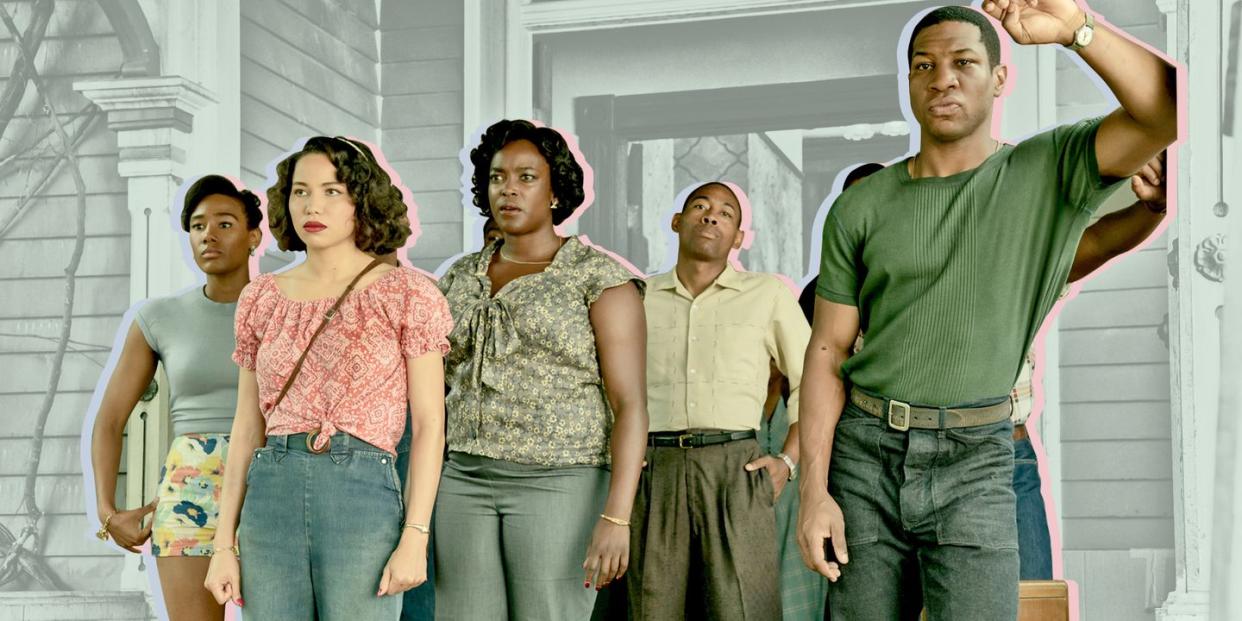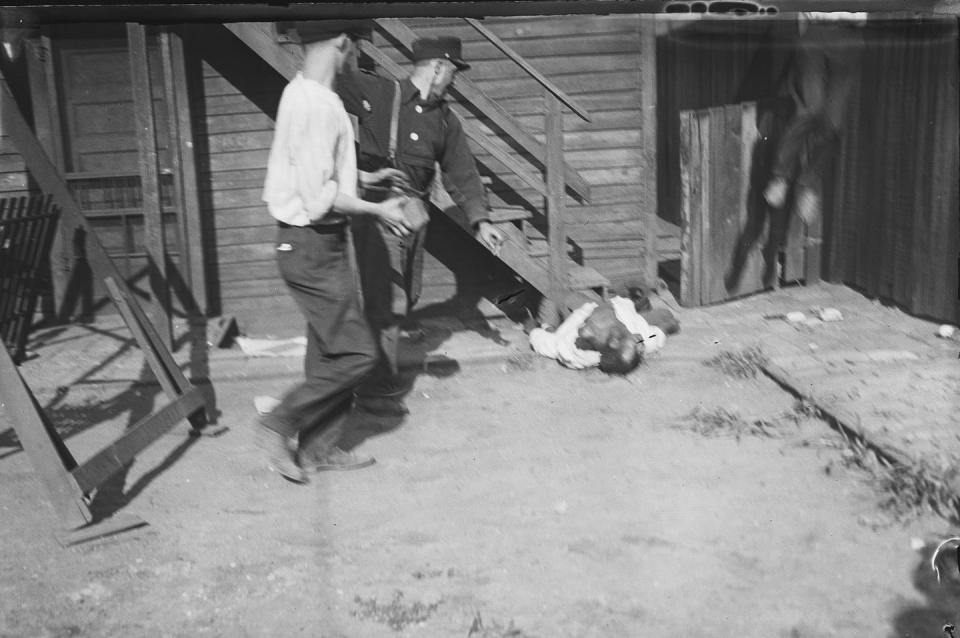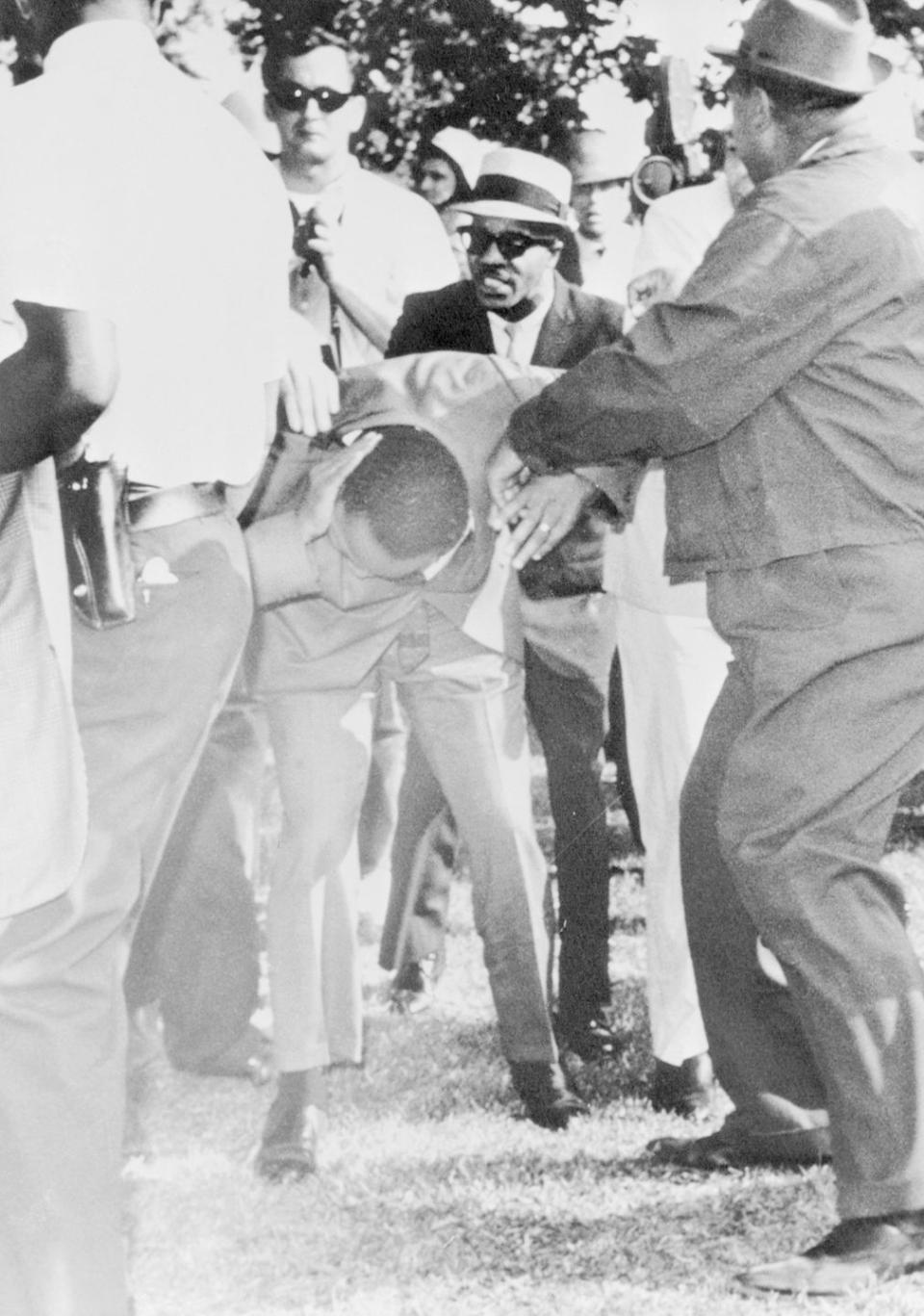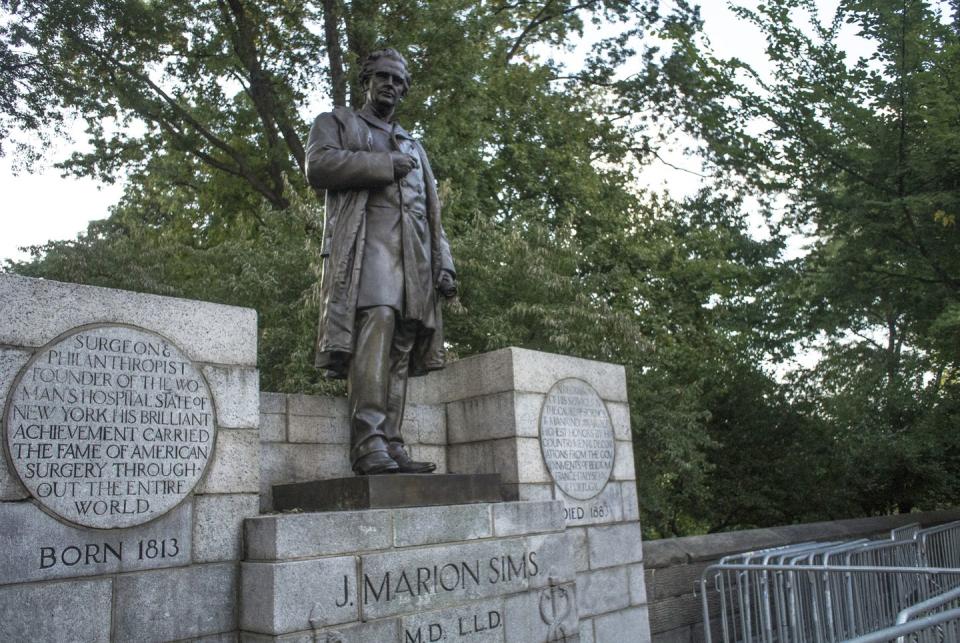The Ghosts of Lovecraft Country Episode Three Are Rooted in Real American History

The first two episodes of HBO's Lovecraft Country tells stories of the nightmares—both real and fictional—that its black characters Letitia Lewis, and Atticus, George, and Montrose Freeman encounter as they try to take a road in the 1950s. But in episode three, the series pivots towards a new story. In it, Leti buys a house in a white Chicago neighborhood, only once again to face the twin horrors of the supernatural and of American racism.
But while the mystical elements are pure fiction, many of the non-supernatural elements in Leti's story are based on real American history. Here's what you should know.
White Illinoisans violently opposed housing integration.
When Leti shows her sister Ruby her new home, Ruby expresses her concern about moving into a white neighborhood. "Just last year there was almost a riot across town because a Negro couple tried to move into an all-white building," she warns.
That story is completely true. In July 1951, Harvey and Johnetta Clark and their two children moved into an apartment in the Chicago suburb of Cicero. They had to get a court order to make the move possible, as when they first attempted to move in, they were prevented from doing so by the sheriff.

But as they began to move in on July 11, a mob of whites gathered. The family was forced to make an escape, as 4,000 whites stormed their new home. The Clarks' belongings were destroyed, with the crowd tossing their sofa out of the window and destroying their daughter's piano. Eventually, they firebombed the building, leaving Clarks and the white families who lived in the building homeless—which really feels like an apt metaphor for so much of American history. None of the rioters and vandals were charged with crimes, though the building's owner and broker were charged for inciting a riot just because they'd rented to the Clarks.
It was just the latest in a string of riots that had erupted in and around Chicago during the first half of the 20th century after being sparked by threats to racial segregation. In 1919, a Black teenager called Eugene Williams was rafting on the beach when he floated into the white side of the water. A white man on the shore threw rocks at him, causing him to fall into the water and drown. The murder sparked a race riot that killed 38 people, 23 black and 15 white.
In 1946, the Airport Homes riots followed, the Fernwood Park riots in 1947, the Trumbull Park Riots in 1953, and the Marquette Park riot in 1966, sparked when Martin Luther King Jr. lead a march through the park to promote fair housing. After being hit in the head with a rock, King famously observed that he had "never seen—even in Mississippi and Alabama—mobs as hostile and as hate-filled as I've seen here in Chicago."

The scientific experimentation parts of the episode are rooted in truth, too.
While Leti is contending with endless harassment by white neighbors, she also has to deal with supernatural happenings at her home. As she discovers, the house is haunted by an evil scientists and the Black people he murdered after using as unwilling text subjects for his experiments.
American history is full of examples of Black people being used as the subjects for deeply unethical experimentation. Most infamous of all was the 40-year-long Tuskegee study, in which the Department of Health's Public Health Service followed hundreds of Black men in Alabama who had been diagnosed with syphilis. They never told their subjects that they had the disease, just that that they had "bad blood." When the experiment began in 1932, there was no effective treatment for the illness. But even when antibiotics were developed and proven to cure the disease, the Department of Health withheld treatment from the men, and instead observed the progression of their illnesses for decades more. The experiment continued until a public health worker leaked details of it to a reporter in 1972.

When Leti names some of the victims who were murdered in her home, she says that two of the women killed were named Lucy and Anarcha. And there really were Black women experimentation victims of those names—though they died decades before the '50s.
Both were enslaved women in Alabama in the 1840s when they were tortured by J. Marion Sims. He was a physician, and would be known as the "father of gynecology" for his work, which included inventing the speculum and developing a method for repairing vagina tears called fistulae. He was able to come to his discoveries by experimenting on slaves. Anarcha and Lucy were both subjected to multiple surgeries without anesthesia until Sims perfected his technique. Only then did he begin to attempt it on white women.
Sims has made headlines in recent years thanks to efforts to remove a statue of him that stood outside New York's Central Park for decades. After years of activists urgings to remove it, the statue was taken down in 2018 and moved to Sims' burial site in Brooklyn's Green-Wood cemetery.
You Might Also Like

